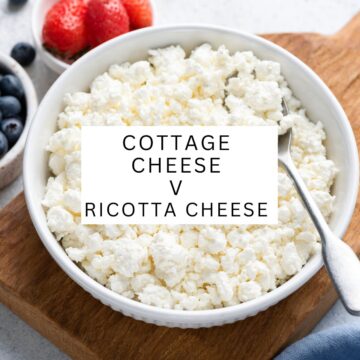The keto vegetarian diet can be a healthy and sustainable way of eating for those who wish to combine the benefits of a ketogenic lifestyle with vegetarianism.
The keto diet is traditionally high in fat, moderate in protein, and very low in carbohydrates. Typically, it involves consuming meats, fish, dairy, eggs, nuts, and low-carb vegetables. However, the vegetarian version excludes meat and fish, focusing more on plant-based protein sources. However, it requires careful planning and monitoring to ensure nutritional adequacy.

Jump to:
What is the Keto Diet?
The ketogenic (keto) diet is a high-fat, low-carbohydrate, and moderate-protein diet that has gained significant popularity as a weight loss and health maintenance strategy. The fundamental principle of the keto diet is to change the body's primary fuel source from carbohydrates to fats.
What is Ketosis?
When the body doesn't have enough carbohydrates from food for energy, it burns stored fat instead. This process results in the production of molecules called ketones, which the body uses for fuel. Ketosis is a natural metabolic state that can occur during fasting, low-carbohydrate diets, or intense exercise.
Key Principles
- Low Carb Intake: Keeping carbohydrate intake to about 5-10% of your total calories, which typically amounts to under 50 grams per day.
- Moderate Protein: Protein should make up about 15-30% of your calorie intake. Too much protein can prevent ketosis.
- High Fat: About 60-80% of your calories should come from fat. This includes healthy plant-based fats.
Adapting Vegetarianism to Keto
The main challenge in a keto vegetarian diet is finding plant-based sources of fat and protein that are not high in carbohydrates. Follow our keto vegetarian shopping list to start.
Foods to Eat
- Vegetarian Protein Sources: Tofu, TVP, tempeh, seitan, Greek yogurt, cheese, eggs, and plant-based protein powders. Options like black soybeans and edamame can fit into a keto diet.
- Healthy Fats: Avocados, olive oil, coconut oil, almonds, chia seeds, flaxseeds, and walnuts are great options.
- Low-Carb Vegetables: Leafy greens, broccoli, cauliflower, zucchini, and peppers.
- Dairy Products: Cheese, butter, and heavy cream, if lacto-vegetarian.
- Fruit - Small portions of berries like strawberries, raspberries, and blackberries are acceptable.
Foods to Avoid
- High-Carb Foods: Bread, pasta, rice, beans, lentils, and high-sugar fruits.
- Processed and Sweetened Foods: Foods high in sugar and unhealthy fats.
- Meat and Fish: As per vegetarian principles.
Planning Your Diet
- Calculate Your Macros: Use an online calculator to determine your daily caloric needs and the appropriate balance of fats, proteins, and carbs.
- Meal Planning: Plan meals ahead of time to ensure you’re meeting your nutritional needs.
- Supplementation: Consider supplements for nutrients that might be difficult to obtain, like Vitamin B12, iron, and omega-3s (from algae oil).
Tips for Starting
- Start Slowly: Gradually reduce carbs and increase fat intake over a few weeks.
- Track Your Food: Use a food tracking app to monitor your macros and ensure you're on the right path.
- Stay Hydrated and Mind Electrolytes: Drink plenty of water and consider adding salt to your meals to maintain electrolyte balance.
- Focus on Whole Foods: Rely on whole, unprocessed foods for the majority of your diet.
Resources
Explore our low carb food list to help you start your journey
Conclusions
The keto vegetarian diet, with its unique combination of low-carb, high-fat, and plant-based foods, offers a pathway to improved health and weight management, aligning with ethical dietary preferences. However, its success hinges on careful planning, monitoring, and a willingness to adapt and learn. Whether for short-term goals or as a long-term lifestyle change, this diet can be both fulfilling and beneficial when approached with mindfulness and knowledge.











